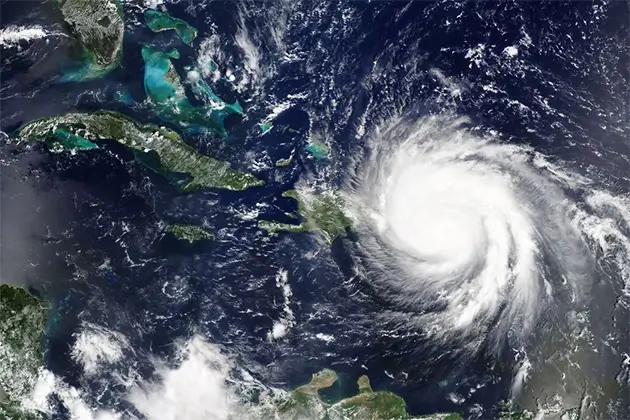Birds are generally assigned to categories based on how far they migrate. This chart shows the trends for four such groups in New Hampshire, as defined here:

Residents are species that don’t migrate at all, or at best make irregular local movements. This group includes most woodpeckers and owls, titmice, cardinals, grouse, and corvids (crows and jays).
Short-distance migrants spend the winter primarily in the southern United States, with some also in northern Mexico or the Caribbean. A few even winter as far north as New England, especially those that breed in the arctic and boreal Canada. This group includes most water birds, many raptors, and all finches and sparrows. Most such migrants, as well as our residents, are increasing or stable.
Long-distance migrants leave the United State entirely to winter in the Caribbean, Central America, and South America. In South America, the destinations of most songbirds are in the Andes or Amazon Basin, while shorebirds and seabirds are along the coasts.
The farther a species migrates, the greater the chance that its population is declining. More species are increasing or stable than declining among residents and short-distance migrants. The numbers flip for the longest migrants however, where more species are decreasing then increasing. No matter how far they travel, migratory birds face additional challenges.
Imagine for a moment that you are a migratory bird. It doesn’t matter if you breed in New Hampshire and fly south for the winter, breed in the arctic and pass through, or breed elsewhere and spend part of your non-breeding season here, you will follow the same general annual cycle. Understanding this cycle and how the different components interact is critical to understanding the conservation of migratory birds.
The threats that operate during the breeding season have already been discussed, but much can still befall “our” breeding birds before they even leave New Hampshire. Between nesting and migration is a poorly understood time known as the post-breeding period, when adults and young alike wander away from nesting areas and prepare for their upcoming migratory journeys. They may not stray far, but they often use very different habitats. For instance, many of New Hampshire’s forest birds move into shrublands in late summer, where they feed on abundant insects and newly-ripe fruit in preparation for migration. Active birders know to seek out habitat edges at this time of year to maximize the number of birds they encounter.
Biologists are only just starting to study birds during the post-fledging period, but it is increasingly clear that any factors that reduce survival in late summer will be additive to the threats which operated while birds were still nesting. Even if your local swallows successfully produced large numbers of young, there is no guarantee that these young will even survive until the start of southbound migration. They may be more vulnerable to predators (including cats), more likely to collide with structures, or more susceptible to changes in food supply.
And then there’s fall migration itself, a time of shifting weather patterns, increased physiological costs, and for young birds the simple fact that they have never done this before. Long-term studies of migratory birds generally tell us that the vast majority of annual mortality occurs during migration (both fall and spring). If a bird was less successful at finding food during the post-fledging period, it might not be in prime condition to migrate, and might die early in the journey. Whether short or long, this annual journey is a gauntlet of new and familiar threats. There are predators (including people), obstacles (e.g., buildings, towers), unpredictable weather (including the fall hurricane season!), and ongoing habitat loss and degradation. A migrating bird can be killed outright, or it can fly through the night only to find an important resting area converted to a subdivision, drained for agriculture, or otherwise rendered unsuitable. If the bird can’t rest or find food, it’s that much less likely to continue the next day. Over the course of weeks or months, these incremental stressors result in at least a third of annual mortality occurring during fall migration, and another third in spring.
Once a bird reaches its wintering area, many of the threats it faced during migration may remain. Habitat loss is still important, and for many long-distance migrants the loss of suitable habitat in the winter range has long been considered an important driver of declines. Depending on the habitat, more pervasive use of pesticides and other chemicals is an additional threat, although one still very poorly understood. Although mortality is relatively low during this stationary period, habitat quality can have important carry-over effects for the annual cycle. Poor quality winter habitat means birds are in poorer condition when the time comes to migrate north. Even if it doesn’t die along the way, it may arrive too late to find a mate and breed.
The American Redstart is one of the best studied migratory songbirds across its annual cycle, with research carried out on both the breeding grounds (red on map) and wintering areas (blue). New technologies are increasingly providing information on what happens during migration (yellow), including timing, routes, and linkages between breeding and wintering areas. Photo credit: Leo McKillop
Thus we see that conditions in late summer can impact fall migration, and conditions over the winter influence spring migration and even breeding success. If we want to conserve migratory birds, we cannot ignore these connections, for the most important threats might not be the ones we’re able to address here in New Hampshire.
With this in mind, what follows is a list of threats and how they operate outside of the breeding season.
Stopover habitat loss occurs all along a species’ migration route and is especially detrimental along coastlines. Coastal plains are often the first or last landfall for migrants making long overwater crossings, and can be an important source of food. New Hampshire’s coastal shrub habitat provides berries and insects in the fall, a combination that allows birds to build up fat quickly to fuel their migration. In the US, and increasingly in Central and South America, development in the coastal plain eliminates this vital stopover habitat, fragmenting forests and degrading or filling in wetlands. Extensive loss of wintering habitat is most pervasive in Latin America and the Caribbean, where many people still rely on subsistence agriculture and continue to clear forests for this purpose. At the same time, even larger areas of habitat are being converted to commercial agriculture, including cattle farms, aquaculture, coffee plantations, soybean fields, avocado groves, and other uses. Agriculture doesn’t have to be a total loss in terms of habitat, as evidenced by studies of birds in shade vs. sun coffee plantations, and there are increasing efforts to develop more sustainable practices for other commodities such as chocolate and rice. Note also that winter habitat loss is not just a tropical issue. Wetlands and bottomland forest in the southern United States have long been removed or altered for agriculture, effecting species like wintering Rusty Blackbirds. The urban/residential footprint required to support growing human populations is an ongoing issue everywhere.


Threats faced by migratory birds on their wintering grounds also affect resident species in tropical countries. Conservation actions implemented “south of the border” can thus benefit “our” birds as well as rare or declining species such as Blue-headed Quail-Doves (found only in Cuba) that use the same habitats. Everything is connected.
Information for the species profiles on this website was compiled from a combination of the sources listed below.
The Birds of New Hampshire. By Allan R. Keith and Robert B. Fox. 2013. Memoirs of the Nuttall Ornithological club No. 19.
Atlas of the Breeding Birds of New Hampshire. Carol R. Foss, ed. 1994. Arcadia Publishing Company and Audubon Society of New Hampshire
Birds of the World. Various authors and dates. Cornell Laboratory of Ornithology.
Data from the Breeding Bird Survey
Data from the Christmas Bird Count